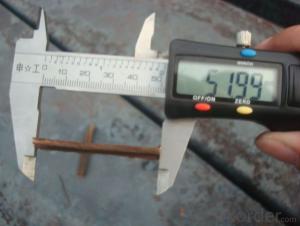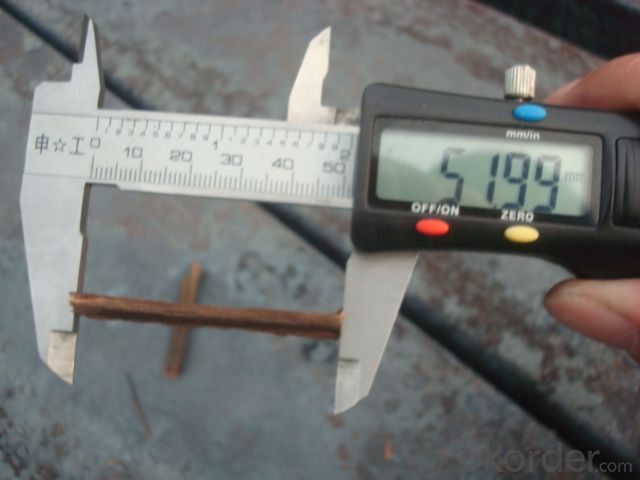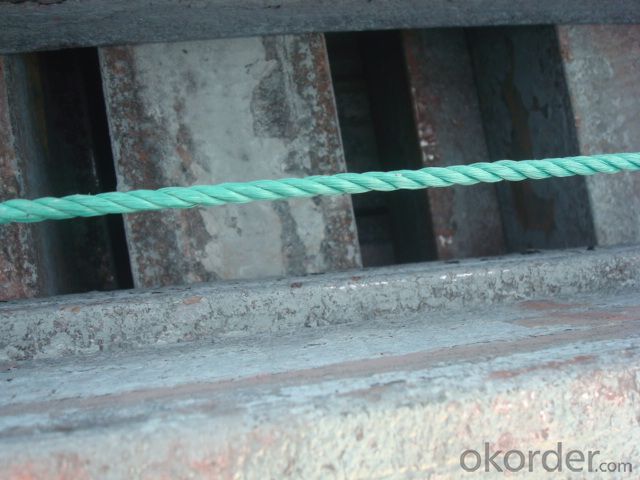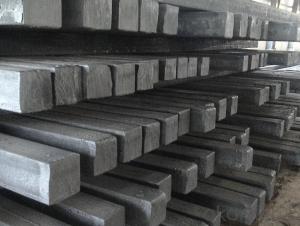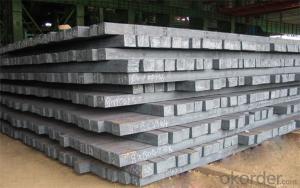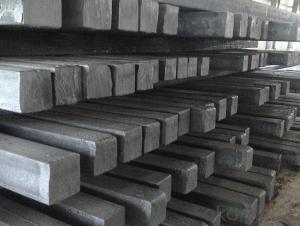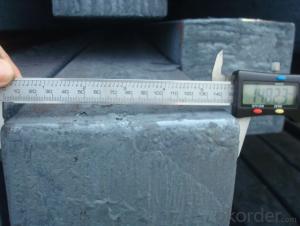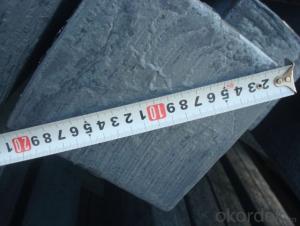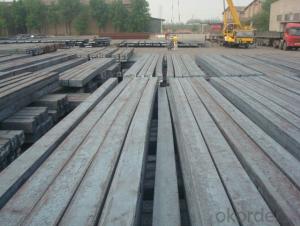Alloyed Continue Casting Steel Billet by Blast Furnace with Chromium
- Loading Port:
- Tianjin
- Payment Terms:
- TT OR LC
- Min Order Qty:
- 1000 m.t.
- Supply Capability:
- 10000 m.t./month
OKorder Service Pledge
OKorder Financial Service
You Might Also Like
Alloyed Continue Casting Steel Billet by Blast Furnace with Chromium
1.Structure of Alloyed Continue Casting Steel Billet by Blast Furnace with Chromium
Alloyed Continue Casting Steel Billet by Blast Furnace with Chromium is the raw material of all kinds of steel mill. Billet section of square, round, flat, rectangular and abnormity, etc Several, mainly related to shape of rolled products. Simple rolled section steel, choose cross section of square billet or rectangular billet. rolling The sector products such as flat steel, Angle steel, select the rectangular billet or slab. Had better profiled billet when production beams, channels, and in rolling process Lines and improve the yield. The raw material of round billet is the production of seamless tube.
2.Main Features of Alloyed Continue Casting Steel Billet by Blast Furnace with Chromium
Alloyed Continue Casting Steel Billet by Blast Furnace with Chromium section size should meet the requirements of rolling deformation and finished product quality, but also roll strength and biting condition of restrictions. General steel Billet section height H. And the roll diameter D The ratio of the ( namely H/D) Should be less than or equal to zero 0.5 . Length of steel billet by finishing temperature, Rolling time and the length of the product Or times ruler. When heated too long accident prone to bump the furnace wall of steel, too short, furnace bottom utilization rate is not high, influence the heating furnace production. For the production Choose a variety of steel and steel billet, should consider the affinities of billet, as far as possible in order to improve the productivity of the roughing mill, simplify the stock management of workshop.
3. Alloyed Continue Casting Steel Billet by Blast Furnace with Chromium Images
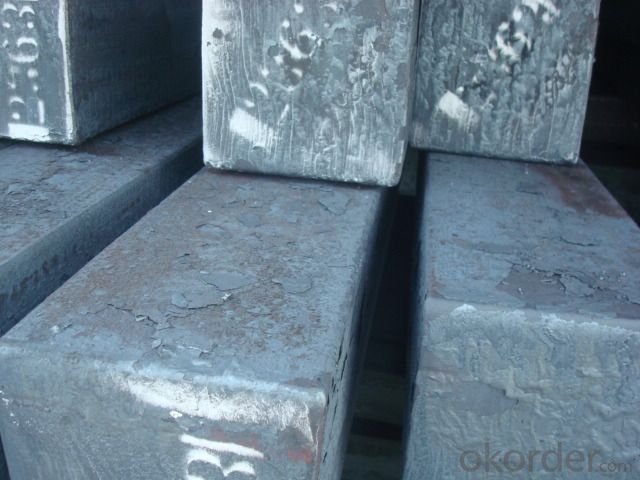
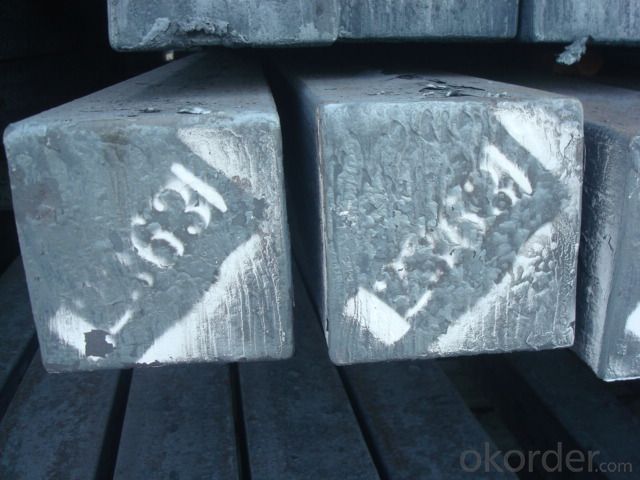
4. Alloyed Continue Casting Steel Billet by Blast Furnace with Chromium Specification
Alloyed Continue Casting Steel Billet by Blast Furnace with Chromium rolled steel, after processing can be used for mechanical parts, forging parts, processing all kinds of steel, steel Q345B channel steel, wire rod is the role of the billet. Steel billet is used in the production of semi-finished products, generally cannot be used directly for the society. Steel billets and steel are strictly divided into standard, cannot decide to whether the business enterprise of the final product, and according to unified standards to perform the whole society. Typically, billet and the steel is relatively easy to distinguish, but for some steel billet, and have the same specification and same steel purposes (such as rolling tube billet), whether can be used for other industries, whether through steel processing process, whether through a finished product rolling mill processing to distinguish
Material standard The editor Range of thickness: 150-240 - mm + / - 5 mm width range: 880-1530 - mm + / - 20 mm Length: 3700-10000 - mm + / - 500 - mm Cross-sectional size: 64 * 64; 82 * 82; 98 * 98; 124 * 124; 120 * 150; 152 * 164; 152 * 170 mm Length: 9000 mm Section of tolerance: billet: 1.0 + / - 2.0-1.0 + / - 1.0 mm slab: width: + / - 2.0 mm thickness: + / - 3.0 mm The length tolerance: + / - 200 mm Section diagonal tolerance: 3.5-8.0 MM Billet section size protrusions requirements: < 1242 mm, do not allow; > = 1242 mm, < = 2 mm 1242 mm, < = 3 mm Beheading (shear) extension deformation: < 1242 mm billet: no control; The slab: < = 15 mm Surface tilt: no more than billet section 0.1 Bending: every 1 m length is not more than 10 mm The distortion: length < = 5 m, < = 11. ; The length of the < = 7.5 M, < = 5. Material % 3 sp/PS chemical composition: C Mn Si S P
5.FAQ of Alloyed Continue Casting Steel Billet by Blast Furnace with Chromium
We have organized several common questions for our clients,may help you sincerely:
①How about your company?
A world class manufacturer & supplier of castings forging in carbon steel and alloy steel,is one of the large-scale professional investment casting production bases in China,consisting of both casting foundry forging and machining factory. Annually more than 8000 tons Precision casting and forging parts are exported to markets in Europe,America and Japan. OEM casting and forging service available according to customer’s requirements.
②How can we know the quality of each steel mill you recommand?
We will show you the steel mills website, production line, stock warehouses and other information open for you.And you can hire the SGS inspect for you too.
③How long is the delivery term if we order about 10,000tons?
Our production term is about 30 days. And if your specification is normal, it can be shorter.
- Q: What are the main factors affecting the tensile strength of steel billets?
- The main factors affecting the tensile strength of steel billets include the chemical composition of the steel, the heat treatment process, the presence of impurities or defects in the material, the grain size and orientation, and the processing conditions used during manufacturing.
- Q: Can steel billets be used in marine environments?
- Yes, steel billets can be used in marine environments. Steel is a commonly used material for marine applications due to its high strength, durability, and corrosion resistance. Steel billets can be further processed into various marine components such as shipbuilding plates, offshore structures, and marine equipment, making them suitable for use in marine environments.
- Q: How are steel billets used in the manufacturing of shipbuilding parts?
- Steel billets are used in the manufacturing of shipbuilding parts as they serve as the primary raw material for shaping and forming various components. These billets are heated and then passed through a series of rolling processes to produce different shapes, such as plates, beams, and angles, which are essential for constructing the hull, decks, and structural components of ships. The strength and durability of steel billets make them ideal for withstanding the harsh conditions at sea, ensuring the integrity and longevity of shipbuilding parts.
- Q: How are steel billets used in the production of valves and fittings?
- Valves and fittings heavily rely on steel billets as a vital raw material. These billets, essentially semi-finished steel products, go through various procedures to ultimately attain the desired shape and size of valves and fittings. To begin with, steel billets are heated to a specific temperature in a furnace to increase their malleability. This enables easier shaping and manipulation of the steel during subsequent forming methods. Once heated, the billets are then transferred to a rolling mill where they undergo multiple passes through rollers to gradually decrease their cross-sectional area and length. This hot rolling process refines the steel's grain structure and enhances its mechanical properties. Following hot rolling, the steel billets often undergo further processing using a technique known as extrusion. In this method, the heated billet is pushed through a die, which imparts the desired shape and dimensions onto the steel. Extrusion is commonly employed to produce cylindrical or tubular shapes, which are crucial components in valves and fittings. Once the desired shape is achieved, the extruded steel is typically subjected to heat treatment methods like quenching and tempering to enhance its strength and durability. This ensures that the final valves and fittings can withstand the demanding conditions they will encounter during their operational lifespan. Ultimately, the heat-treated steel is machined and finished to meet the specific requirements of the valves and fittings. This involves processes such as drilling, threading, and surface finishing to attain the necessary dimensions, threads, and smoothness. In conclusion, valves and fittings are produced from steel billets through a series of procedures including heating, hot rolling, extrusion, heat treatment, and machining. These processes guarantee that the resulting valves and fittings possess the necessary strength, durability, and dimensional accuracy needed for their intended applications.
- Q: What are the common sizes of steel billets?
- The sizes of steel billets can differ depending on the specific industry and application. However, there are various standard sizes that are frequently utilized. In the construction sector, steel billets commonly measure between 100mm x 100mm and 200mm x 200mm. These sizes are often employed in the fabrication of structural steel, such as beams, columns, and other load-bearing elements. For the production of automotive parts, the usual sizes of steel billets typically range from 150mm x 150mm to 250mm x 250mm. These sizes are commonly employed in forging and machining processes to manufacture components like crankshafts, connecting rods, and gears. In the oil and gas industry, larger steel billets are often necessary for manufacturing pipes and tubes. The typical sizes for this purpose range from 350mm x 350mm to 500mm x 500mm. These larger billets enable the production of seamless pipes capable of withstanding high-pressure environments. It should be noted that these are only general sizes and can vary depending on specific project requirements and regional standards. Additionally, customized sizes can also be produced based on the customer's requirements.
- Q: What are the different surface treatments for improved dimensional accuracy in steel billets?
- Some of the surface treatments for improved dimensional accuracy in steel billets include shot blasting, grinding, and polishing. Shot blasting involves propelling abrasive particles onto the surface to remove any imperfections or scale, resulting in a smoother and more uniform surface. Grinding is another technique that uses abrasive wheels to remove material and achieve precise dimensions. Lastly, polishing is a process that involves using fine abrasives to further smoothen the surface and enhance dimensional accuracy.
- Q: What is the typical size and shape of steel billets?
- Steel billets typically have a rectangular or square shape and come in various sizes. The most common sizes range from 100mm x 100mm to 300mm x 300mm, with lengths typically ranging from 3 meters to 12 meters. However, the size and shape of steel billets can vary depending on the specific requirements of the steel production process and the intended use of the billets.
- Q: How do steel billets contribute to the manufacturing of automotive components?
- Steel billets play a crucial role in the manufacturing of automotive components. These billets, which are semi-finished metal pieces, serve as the starting material for the production of various automotive parts. One of the main ways steel billets contribute to automotive component manufacturing is through the process of forging. Forging involves shaping the metal billets under high pressure and temperature, typically using a hammer or a press, to create the desired automotive parts. This process helps in enhancing the strength, durability, and reliability of the components, making them suitable for the demanding conditions of the automotive industry. Steel billets are also used in the production of engine components such as crankshafts, connecting rods, and piston rods. These parts require high strength and resistance to wear and tear, which are achieved by starting with high-quality steel billets. By using steel billets as the raw material, automotive manufacturers can ensure that the resulting components have the necessary mechanical properties to withstand the stresses and forces experienced by the engine during operation. Furthermore, steel billets are employed in the manufacturing of suspension components, such as control arms and stabilizer bars. These components are responsible for maintaining the stability, handling, and comfort of the vehicle. Using steel billets in their production ensures that the suspension components can withstand the heavy loads and impacts encountered on the road, providing a smooth and safe driving experience. Additionally, steel billets contribute to the manufacturing of safety-related automotive components. For instance, they are used in the production of structural components like chassis frames and body reinforcements. These components are essential for protecting the occupants in the event of a collision or impact, and steel billets provide the necessary strength and rigidity to ensure their effectiveness. In conclusion, steel billets are a vital element in the manufacturing of automotive components. They enable the production of strong, durable, and reliable parts, ensuring the overall performance, safety, and longevity of vehicles. By starting with high-quality steel billets, automotive manufacturers can meet the demanding requirements of the industry and deliver high-performance vehicles to consumers.
- Q: How do steel billets contribute to the overall strength of a structure?
- Steel billets contribute to the overall strength of a structure by serving as the raw material for various structural components. They are made from molten steel that is solidified into a rectangular shape, resulting in a dense and homogeneous material. These billets are then further processed and formed into beams, columns, and other load-bearing elements. Their high strength and durability allow them to withstand heavy loads and forces, enhancing the overall structural integrity of the building or infrastructure.
- Q: What are the different types of steel billet surface defects?
- There are several types of steel billet surface defects, including cracks, scale, surface laps, scratches, and pitting.
Send your message to us
Alloyed Continue Casting Steel Billet by Blast Furnace with Chromium
- Loading Port:
- Tianjin
- Payment Terms:
- TT OR LC
- Min Order Qty:
- 1000 m.t.
- Supply Capability:
- 10000 m.t./month
OKorder Service Pledge
OKorder Financial Service
Similar products
Hot products
Hot Searches
Related keywords
